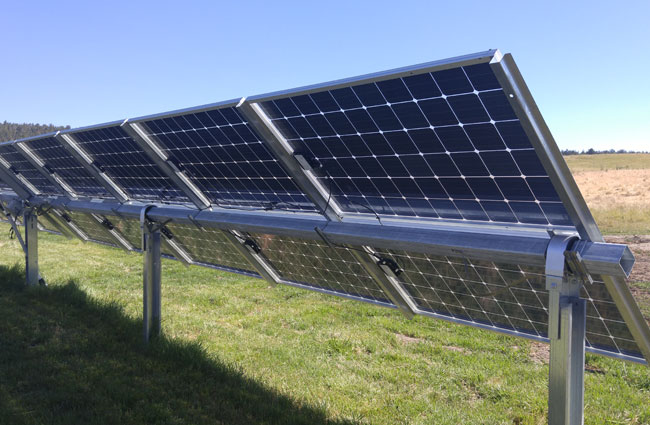Introduction
Due to new bifacial technologies and larger utility-scale photovoltaic (PV) arrays, there is a growing need for models that can more accurately account for the multiple diffuse light components and reflections incident on the front and back surfaces of a PV array.

Fig. 1: Example of bifacial modules on single-axis tracker
Ray tracing models are often chosen for their high level of accuracy, but in order to reach such precision they often become computationally intensive and slower to run.
The view factor model presented here uses a simplified method for the calculation of bifacial irradiance.
It is an application of view factors on 2D geometry representations of PV arrays (for both single-axis trackers and fixed tilt systems), invariant by translation along the tracker axis. It can be used for energy production calculation of large PV arrays thanks to its high computational speed (less than 2 seconds for annual hourly simulations), and also because edge effects occurring in large PV arrays are negligible.
The goal of this view factor model is to allow fast and accurate irradiance calculations to provide quantitative answers to diffuse shading and bifacial PV questions.